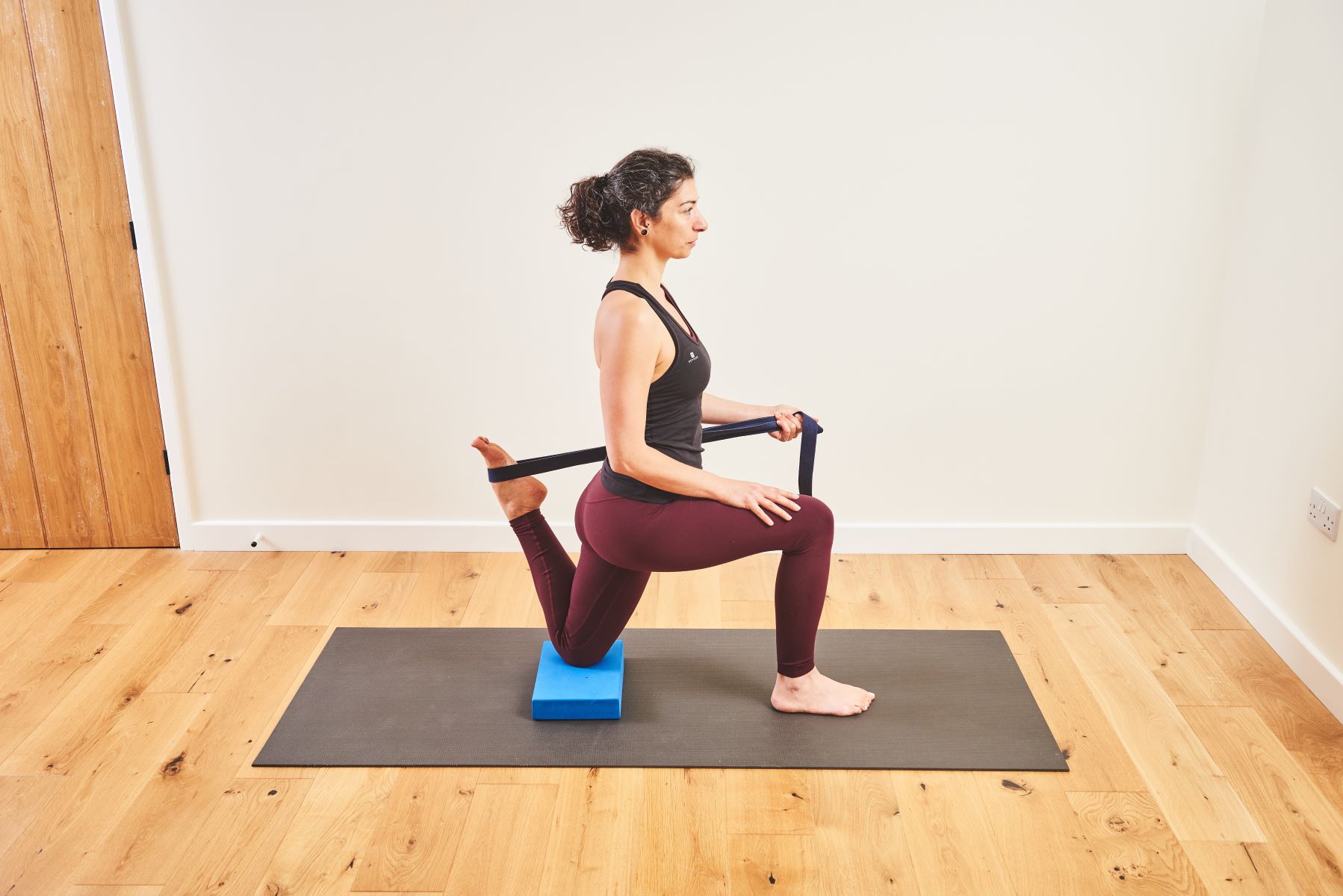Home>Training & Techniques>Cross-Training>Running: Incorporating Balance Disc Exercises


Cross-Training
Running: Incorporating Balance Disc Exercises
Published: February 20, 2024
Improve your cross-training routine with balance disc exercises to enhance stability, strength, and overall performance while running. Discover effective techniques and tips.
(Many of the links in this article redirect to a specific reviewed product. Your purchase of these products through affiliate links helps to generate commission for Therunningadvisor.com, at no extra cost. Learn more)
Table of Contents
- Benefits of Incorporating Balance Disc Exercises into Your Running Routine
- How to Use Balance Discs to Improve Your Running Performance
- Common Balance Disc Exercises for Runners
- Tips for Incorporating Balance Disc Exercises into Your Training Plan
- Precautions and Considerations When Using Balance Discs for Running
Benefits of Incorporating Balance Disc Exercises into Your Running Routine
Incorporating balance disc exercises into your running routine can significantly enhance your overall performance and reduce the risk of injuries. These simple yet effective exercises offer a myriad of benefits that can take your running to the next level. Here are the key advantages of integrating balance disc exercises into your training regimen:
-
Improved Stability and Balance: Balance discs challenge your body's stability and balance, which are essential for maintaining proper form and posture while running. By engaging the stabilizing muscles in your legs, core, and ankles, these exercises help you develop a stronger and more stable foundation, leading to better running mechanics and reduced risk of falls or sprains.
-
Enhanced Core Strength: Running requires a strong core to support your body and maintain proper alignment. Balance disc exercises engage the core muscles, including the abdominals, obliques, and lower back, leading to improved core strength and stability. A strong core not only enhances your running efficiency but also reduces the likelihood of experiencing lower back pain during long runs.
-
Increased Proprioception: Proprioception, or the body's awareness of its position in space, is crucial for runners to navigate uneven terrain and adapt to changes in running surfaces. Balance disc exercises stimulate proprioceptive feedback, training your body to react and adjust to various ground conditions, ultimately improving your agility and coordination while running.
-
Injury Prevention: Strengthening the stabilizing muscles through balance disc exercises can help prevent common running injuries, such as ankle sprains, IT band syndrome, and knee pain. By addressing muscle imbalances and enhancing overall stability, these exercises contribute to a more resilient musculoskeletal system, reducing the likelihood of overuse injuries and imbalances caused by repetitive running motions.
-
Cross-Training Benefits: Incorporating balance disc exercises into your training routine provides a valuable form of cross-training, allowing you to diversify your workouts and target muscle groups that may not be adequately engaged during running alone. This cross-training approach can lead to more well-rounded fitness and improved overall performance.
By integrating balance disc exercises into your running routine, you can reap these benefits and elevate your running experience to new heights. Whether you're a seasoned runner or just starting out, these exercises offer a valuable complement to your training, helping you build strength, stability, and resilience for the miles ahead.
Read more: Top 4 Balance Exercises For Runners
How to Use Balance Discs to Improve Your Running Performance
Incorporating balance discs into your running routine can be a game-changer, enhancing your overall performance and reducing the risk of injuries. To leverage the benefits of balance discs effectively, it's essential to understand how to integrate them into your training regimen. Here's a comprehensive guide on how to use balance discs to elevate your running performance:
1. Warm-Up and Activation
Before delving into your running-specific exercises, start by using the balance discs for warm-up and muscle activation. Stand on the discs with feet hip-width apart and focus on maintaining stability. Engage your core and lower body muscles to stabilize yourself on the discs. This initial activation primes your muscles for the upcoming running workout, enhancing their responsiveness and readiness for the demands of running.
2. Strength and Stability Training
Integrate balance disc exercises into your strength and stability training sessions. Perform exercises such as squats, lunges, and calf raises while standing on the discs. The unstable surface of the discs challenges your body's stability, forcing your muscles to work harder to maintain balance. This, in turn, strengthens the stabilizing muscles in your legs, ankles, and core, contributing to improved running mechanics and reduced risk of injuries.
3. Proprioceptive Training
Utilize balance discs to enhance your proprioceptive abilities, which are crucial for navigating uneven terrain while running. Incorporate exercises that involve shifting your weight and adjusting your body position on the discs. This challenges your body's proprioception, training it to adapt to varying ground conditions. Improved proprioception translates to better agility and coordination, enabling you to tackle diverse running surfaces with confidence and efficiency.
4. Recovery and Rehabilitation
Balance discs can also play a role in your post-run recovery and rehabilitation. After a challenging run, use the discs for gentle stretching and mobility exercises. The unstable surface can facilitate gentle muscle activation and promote blood flow to aid in the recovery process. Additionally, for runners dealing with ankle or lower leg injuries, carefully prescribed balance disc exercises can be incorporated into their rehabilitation program to rebuild strength and stability.
5. Integration into Running Drills
Integrate balance discs into your running-specific drills to simulate the dynamic demands of running. For instance, perform single-leg balance exercises on the discs to mimic the unilateral nature of running. This not only enhances your balance and stability but also reinforces the neuromuscular connections essential for efficient running form.
By incorporating these strategies, you can harness the full potential of balance discs to improve your running performance. Whether you're aiming to enhance your strength, stability, agility, or injury resilience, the versatility of balance discs offers a valuable addition to your running regimen. Embrace the challenge of the unstable surface, and witness the transformative impact it can have on your running journey.
Common Balance Disc Exercises for Runners
Balance disc exercises offer a diverse array of movements that can benefit runners of all levels. By incorporating these exercises into your training routine, you can target key muscle groups, improve stability, and enhance proprioception, ultimately boosting your running performance. Here are some common balance disc exercises tailored specifically for runners:
1. Single-Leg Balance
Stand on the balance disc with one foot while lifting the other leg off the ground. Focus on maintaining stability and balance as you engage the stabilizing muscles in your standing leg. This exercise not only strengthens the ankle and lower leg muscles but also improves proprioception, essential for navigating uneven terrain during runs.
2. Squats
Perform squats while standing on the balance disc to challenge your lower body stability and strength. The unstable surface forces your muscles to work harder to maintain balance, effectively targeting the quadriceps, hamstrings, and glutes. This exercise mimics the demands placed on these muscles during running, contributing to improved overall strength and stability.
3. Lunges
Step onto the balance disc with one foot and perform forward or lateral lunges. The dynamic nature of lunges on an unstable surface engages the core and lower body muscles, promoting better balance and coordination. Additionally, this exercise helps correct muscle imbalances and enhances stability, crucial for injury prevention during running.
4. Calf Raises
Stand on the balance disc with the balls of your feet, then raise and lower your heels to perform calf raises. This exercise targets the calf muscles and Achilles tendon, which play a vital role in propelling you forward during runs. By incorporating calf raises on the balance disc, you can strengthen these muscles while improving ankle stability and balance.
5. Plank Variations
Engage your core by performing plank variations on the balance disc. Start with a traditional forearm plank and gradually progress to side planks and plank with leg lifts. The unstable surface intensifies the challenge, requiring greater core activation to maintain stability. A strong core is essential for maintaining proper running form and reducing the risk of lower back pain.
6. Knee Raises
While standing on the balance disc, perform knee raises by lifting each knee toward your chest alternately. This exercise targets the hip flexors and abdominal muscles, enhancing core strength and stability. Strong hip flexors contribute to improved running mechanics and can help prevent common running-related injuries.
Incorporating these common balance disc exercises into your training plan can yield significant benefits for runners. Whether you're aiming to enhance stability, strengthen key muscle groups, or improve overall running performance, these exercises provide a valuable complement to your running regimen. Embrace the challenge of the unstable surface and witness the positive impact it can have on your running journey.
Tips for Incorporating Balance Disc Exercises into Your Training Plan
Incorporating balance disc exercises into your training plan can significantly enhance your running performance and overall fitness. To maximize the benefits of these exercises, it's essential to integrate them strategically and consistently. Here are valuable tips to help you seamlessly incorporate balance disc exercises into your training plan:
-
Start Gradually: If you're new to balance disc exercises, begin with simple movements to familiarize yourself with the unstable surface. Focus on maintaining stability and gradually increase the duration and intensity of the exercises as your confidence and proficiency grow.
-
Integrate into Warm-Up and Cool-Down Routines: Use balance disc exercises as part of your warm-up routine to activate key muscles and prepare your body for the demands of running. Similarly, incorporating these exercises into your cool-down routine can aid in muscle recovery and promote post-run relaxation.
-
Consistency is Key: Aim to incorporate balance disc exercises into your training plan on a regular basis. Consistency is crucial for reaping the benefits of these exercises, as it allows your body to adapt and strengthen the stabilizing muscles over time.
-
Combine with Running-Specific Movements: Integrate balance disc exercises that mimic running-specific movements, such as single-leg balance and dynamic lunges, to directly target the muscles and stability required for running. This integration helps bridge the gap between strength training and running mechanics.
-
Progressive Challenge: As you become more proficient with balance disc exercises, progressively challenge yourself by incorporating advanced movements and increasing the duration or intensity of the exercises. This gradual progression stimulates continuous improvement and adaptation.
-
Focus on Form and Control: Pay close attention to your form and control while performing balance disc exercises. Emphasize proper alignment and engage your core and stabilizing muscles to maintain stability on the discs, ensuring that the exercises effectively target the intended muscle groups.
-
Seek Professional Guidance: If you're unsure about incorporating balance disc exercises into your training plan or if you have specific concerns or pre-existing conditions, consider seeking guidance from a fitness professional or physical therapist. They can provide personalized recommendations and ensure that the exercises align with your individual needs and goals.
-
Variety and Creativity: Keep your training engaging by incorporating a variety of balance disc exercises. Explore different movements and combinations to target various muscle groups and prevent monotony in your training routine.
By implementing these tips, you can seamlessly integrate balance disc exercises into your training plan, unlocking their potential to enhance your running performance and overall fitness. Embrace the challenge of the unstable surface and witness the positive impact it can have on your running journey.
Precautions and Considerations When Using Balance Discs for Running
When incorporating balance discs into your running routine, it's crucial to be mindful of certain precautions and considerations to ensure a safe and effective integration. While balance disc exercises offer numerous benefits, it's important to approach them with a balanced perspective and take into account the following factors:
1. Proper Footwear
Wearing appropriate footwear is essential when using balance discs for running-related exercises. Opt for supportive athletic shoes that provide stability and cushioning, as they can enhance your grip on the discs and reduce the risk of slipping or losing balance during the exercises.
2. Gradual Progression
Avoid progressing too quickly with balance disc exercises, especially if you're new to this form of training. Gradually increase the duration, intensity, and complexity of the exercises to allow your body to adapt and build the necessary strength and stability. Rushing into advanced movements without a solid foundation can increase the risk of injury.
3. Surface Considerations
When using balance discs for running-specific exercises, ensure that you perform the movements on a stable and safe surface. Avoid uneven or slippery flooring, as this can compromise your stability on the discs and increase the risk of falls or injuries. Choose a flat and non-slip surface for optimal safety.
4. Individual Limitations
Take into account any pre-existing injuries, musculoskeletal conditions, or physical limitations when incorporating balance disc exercises into your running routine. If you have specific concerns, it's advisable to consult with a healthcare professional or a certified trainer to determine the suitability of these exercises based on your individual circumstances.
5. Focus on Control
Maintain a strong focus on control and proper form while performing balance disc exercises. Engage your core muscles and stabilizers to stabilize your body on the discs, minimizing excessive movements that could lead to strain or imbalance. Emphasizing control not only maximizes the effectiveness of the exercises but also reduces the risk of overexertion.
6. Balance and Stability
While balance discs are designed to challenge your stability, it's important to prioritize safety and balance. Start with basic exercises to familiarize yourself with the unstable surface before progressing to more advanced movements. Building a strong foundation of balance and stability is key to reaping the benefits of these exercises while minimizing the risk of accidents.
By being mindful of these precautions and considerations, you can integrate balance disc exercises into your running routine with confidence and safety. Embrace the challenge of these exercises while prioritizing your well-being, and you'll harness their potential to enhance your running performance and overall fitness.











